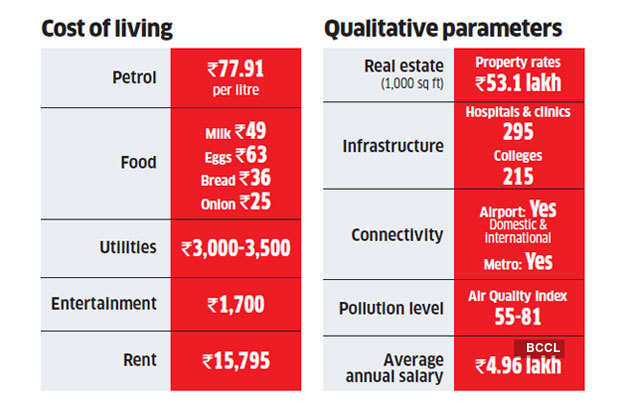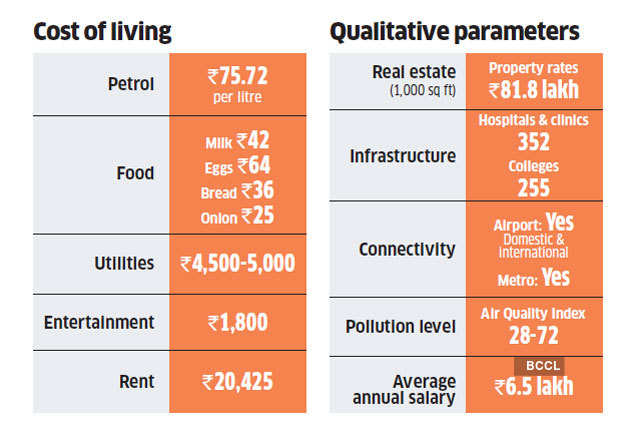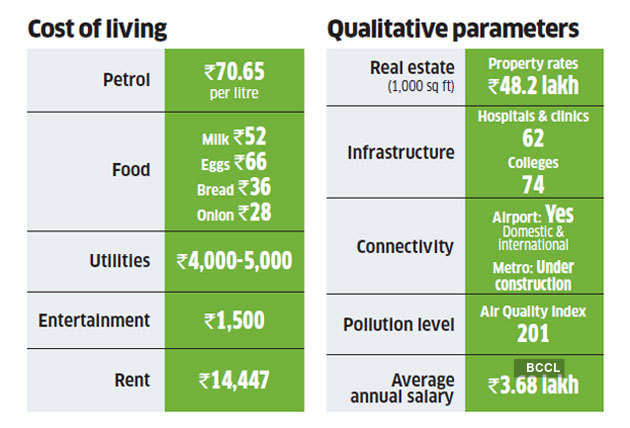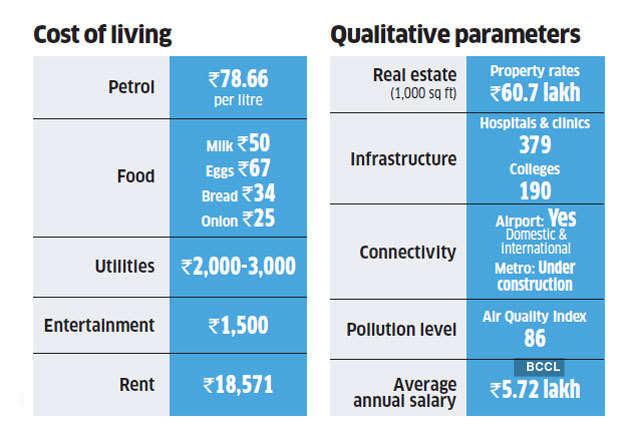India has four metropolitan cities, namely Chennai, Delhi, Mumbai and Kolkata. Over the years, many have moved to these metropolises in search of better job opportunities and a better life. However, these cities are literally choking due to overcrowding and pollution and living in these cities is becoming unaffordable.
There is good news for city-dwellers. As some of the prominent tier 2 cities have morphed into metros since 2014, taking the total number of metros to eight—Bengaluru, Hyderabad, Ahmedabad and Pune are the new additions.
Want to know how much it costs to living in these 'new' metros? ET Wealth breaks down the numbers for you: cost of travel, food, living and so on. We also tell you a little about the transport systems in the cities, pollution levels and infrastructure.
- HYDERABAD
The capital of Telangana was adjudged the best city in the country for the fifth year in a row in the Mercer’s Quality of Living rankings 2019. This is because of a combination of factors like superior infrastructure including road, power, traffic, metro, safety, good quality of education, easily available talent pool and ease of doing business.

Add to these advantages like low pollution levels, affordable property and reasonable cost of living, and it makes for the best city to be living in despite its elevation from a tier 2 city to a metro. High-paying jobs with low attrition levels compared with those in Bengaluru, and an optimum work-life balance are other pluses. So, by all means, overlook its ‘metro’ status and consider shifting here for a better quality of life and lower stress levels.
- BENGALURU
Regarded as India’s Silicon Valley and a dream destination for tech employees, Bengaluru was also considered the best city to live in due to its good infrastructure, employability, low pollution and reasonable cost of living. However, in the past five years or so, it has not only been replaced by Hyderabad as the best city to live in, but is being given stiff competition by tier 2 cities that are emerging as IT hubs and tech startup centres.

Fast expansion, rising realty rates, water pollution and extremely chaotic traffic conditions have taken the sheen off this coveted capital of Karnataka as place to settle in. Though its cosmopolitan lifestyle, low crime rate and good jobs are still an attraction for people, more and more are beginning to consider tier 2 options when it comes to settling down with a more relaxed pace of life.
- AHMEDABAD
Living up to its new status of a metro city, Ahmedabad in Gujarat has steep air pollution levels and cost of living is reasonably high too. On the other hand, this modern, cosmopolitan city is safe for women and crime rate is low, while the infrastructure is good. It also has several prestigious higher educational institutes like the IIM-A for management, NID for designing, MICA for advertising and GNLU for law, among others.

With reasonable property rates, good job opportunities and a metro under construction, Ahmedabad joins Hyderabad and Pune in being an attractive destination for those forsaking the older metros. If, however, you are avoiding high pollution areas, steer clear of this city and consider other tier 2 options.
- PUNE
Sharing the top rank of the best city in the country along with Hyderabad is Pune, according to Mercer’s Quality of Living rankings 2019. The city that has always lived in Mumbai’s shadow, is only now seeming to emerge from it, with some clear advantages. Though it is just 148 km from Mumbai, the cost of living is lower and property prices here are almost one-fourth those of the metro, while air quality is comparable.

Connectivity is high with a good bus rapid transit system in place and metro rail in the offing. A tech startup hub, it has a good diversity of extremely well-paying jobs and good health-care facilities, making it another exceptional metro city after Hyderabad to be a good destination for those wanting to escape the older metros.
Topic Source : Economic Times

Comments
Post a Comment